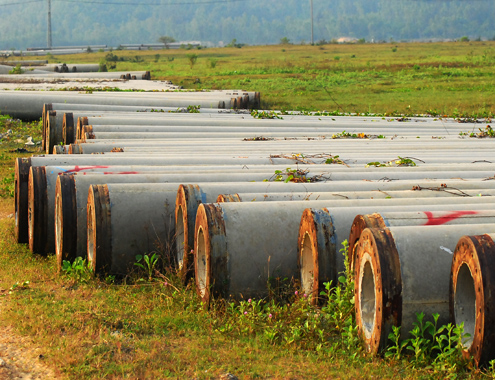Hoa Phat may take over dying steel project in Quang Ngai
 |
Accordingly, the project will have a total investment capital of $3 billion and an annual capacity of 4 million tonnes. The construction will be divided into two phases, with a capacity of 2 million tonnes each. The investor seeks approval to retain the factory’s operation for 70 years. Once the factory comes into operation, it is expected to bring an annual $2 billion in revenue for the operator.
DEZA has submitted documents to ministries and the relevant authorities for comments on Hoa Phat’s proposal.
According to DEZA, with an annual expected revenue of $2 billion, the factory will not only contribute approximately VND4 trillion ($178.3 million) a year to the province’s budget, but also generate about 8,000 jobs.
Based on the massive scale of the project, if licenced, the investor will receive incentives during both the construction and the operation stages. Notably, the investor will be exempt from land lease fees for 18 years and then only need to shoulder 10 per cent for the next 30 years.
However, Hoa Phat will have to pay VND203.5 billion ($9.07 million) for site clearance, which the province financed the Guang Lian project’s site clearance.
Along with Hoa Phat, another Vietnamese steel maker Hoa Sen Group was reported to compete for the right to develop the Guang Lian Dung Quat Steel factory. However, Hoa Sen has yet to officially express movement to implement the project.
In early September, Quang Ngai Province’s People’s Committee decided to revoke 337 hectares of land from Guang Lian Dung Quat Steel factory, due to its long delay in construction and violating the Land Law.
Licensed in September 2006, the project was initiated by Taiwanese steel giant Tycoons with a total investment of more than $556 million. The investor committed to completing the construction within 36 months.
E-United Group joined later by acquiring a 90 per cent stake. The two Taiwanese enterprises raised the registered investment amount to $3 billion in 2008 and then $4.5 billion in 2010, while simultaneously increasing the factory’s manufacturing capacity to seven million tonnes per year, five million tonnes higher than the initial design.
However, the investors have put the construction on hold for numerous times.
In December 2015, the management board carried out an inspection of the project grounds, while simultaneously requesting the investors to voluntarily liquidate its assets.
In March 2016, the two investors committed to restarting the project with the total capital of $2.2 billion and an output of five million tonnes per year. The investors also committed to completing the construction within 42 months.
However, after numerous further delays, the local authorities have grown distrustful of the investors as well as the very feasibility of the project.
Since its ground-breaking ceremony in 2007, the investors have put about $42 million into constructing some work facilities, such as house blocks for workers, walls, and installing pile driving equipment.
What the stars mean:
★ Poor ★ ★ Promising ★★★ Good ★★★★ Very good ★★★★★ Exceptional
Latest News
More News
- Global partnerships key to Vietnam’s IFC development (December 26, 2025 | 16:18)
- Vingroup pulls out of bid to invest in North-South high-speed railway (December 26, 2025 | 11:42)
- Strengthening supply chains through trade promotions and customs reform (December 24, 2025 | 14:00)
- PM orders investment model for North–South high-speed rail (December 22, 2025 | 17:43)
- LS Eco Energy to invest in Vietnam rare earth sector (December 22, 2025 | 17:31)
- Government moves to establish International Financial Centre (December 21, 2025 | 21:00)
- Vietnam's IFC to target global investment flows (December 21, 2025 | 18:00)
- Two national hospitals expand capacity with new facilities (December 20, 2025 | 09:00)
- Ha Tinh breaks ground on major Vingroup industrial and energy projects (December 19, 2025 | 18:24)
- EVN launches major power infrastructure projects nationwide (December 19, 2025 | 18:17)

















 Mobile Version
Mobile Version